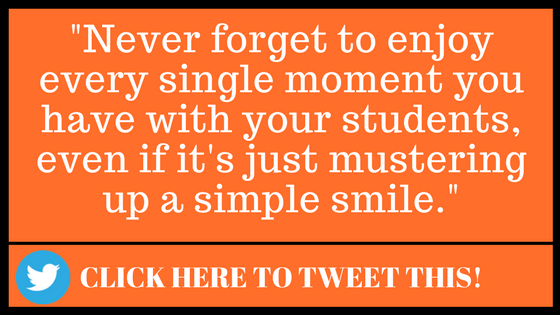As you read this you probably have a lot of ideas floating through your head about the amazing learning activities you’re going to experience with your students. Whether it is an idea you read about in an article, something a colleague of yours has tried, or an awesome PD session you’ve attended, it’s time to put those concepts into action! Regardless of how far into, or away from, the start of the year you are, I’d like to share 7 simple ways that you can start increasing student success in your classroom today!
1. Set Systems and Routines:
I don’t want to beat a dead horse here ,or echo the wisdom of Wong and Wong, but the key to any successful instructional environment is systems and routines. Students will do better in an environment that is safe, predictable, and positive in nature. I would also argue, based on experience and observations, that it is a foundation of systems and routines that can allow for greater student freedom in the classroom. By providing this type of environment you will allow your students to thrive!
2. Let Students Set The Pace:
If you did an evaluation of the most common reasons why management issues occur, or what causes student frustration to increase, or if you reviewed the most common interventions for special needs students, pace would be at the core of it all.
Many students will disengage or act out because they are either bored because they have already mastered the material, or they are frustrated and lost due to the pace of the class being to fast. This is the exact reason why self-paced and mastery learning strategies have begun to increase in prevalence. More importantly, we are at a stage where technology can allow these strategies to be more effective and easy to manage than ever. By making this single shift you can drastically increase the success of your students and reduce management issues at the same time.
3. Increase Student Engagement:
Regardless of how long you’ve been teaching, or how many systems and routines you have in your class, the single best way to reduce management issues and increase student buy-in is with engaging content and learning opportunities. This means putting down the text book, and looking for real-world connections and dynamic interactive lessons to provide your students with. The best instructional framework and management in the world is never going to make “Chapter 3” interesting for your students. It’s our job as educators to make the content come alive and have meaning for our learners. When this happens, they will work harder and learn like never before.
4. Keep ALL Stakeholders Involved:
One of the quickest ways to ruin a school year is having your colleagues, administrators, parents either questioning what you’re doing or providing extra work in the form of meetings, calls, and sometimes awkward or uncomfortable discussions. The easiest way to avoid this is to keep them all involved and informed as to what’s going on in your classroom. Being transparent about what’s going on and what you’re doing with your learners, and being pro-active about communicating these things, will help you avoid a lot of confusion and headache. Inviting stakeholders into your room is another way you can increase their trust and understanding of the amazing work you are doing! This is a simple thing you can do to help yourself stay focused on what matters: student growth!
5. Increase Student Ownership:
Increasing student ownership is one of the hardest but most powerful things you can do to improve your classroom. By shifting this dynamic your students will more freely ask questions, express their concerns, and more importantly feel empowered to do their best, fail, and try again. When students own their learning and have more control, they simply learn more. You can do this in many ways, but you can start small with peer to peer tutoring, self-paced learning, or even having your students help create some of those systems and routines at the beginning of the year. It’s hard sometimes, but the more you can let your students own their experiences, the more they will mean to them in your classroom.

6. Set High Expectations:
Before you call me out about a “dead horse being beaten”, I know this one is a bit cliche. However, it doesn’t mean that setting high expectations isn’t important to student success. There’s even a large amount of research to support it. The way that you see your students and their potential can have a direct impact on how you treat, interact, and instruct them. Setting high expectations and making those expectations explicit for learners can drastically increase their achievement.
7. Have Fun:
One of the most important lessons I have learned as a teacher is that my students can ALWAYS tell when I was “faking it.” Whether I was having an off day, frustrated from a meeting, or maybe just tired at the end of a week, they can see it. When we just go through the motions, students not only feel it, but react to it in the same way. At the core of every single educator I’ve met is a love for what they do and a passion for sharing knowledge and the gift of learning with their students.
I can’t stress enough how having fun with your students, laughing with them, making mistakes, and just enjoying what you do will improve your classroom. When you show your learners that you love spending time with them, they will appreciate it, and that is the foundation of the relationships you will build. It’s hard sometimes to keep this up, especially when times get tough, but find joy in the small things, silly chuckles, and moments of brilliance you create with your students. We have the best job in the world. One of the hardest, but the best nonetheless. Never forget to enjoy every single moment you have with your students, even if it’s just a simple smile.
There are hundreds of other things that could have made this list, but these are the foundations of the most successful classrooms I’ve ever seen.



